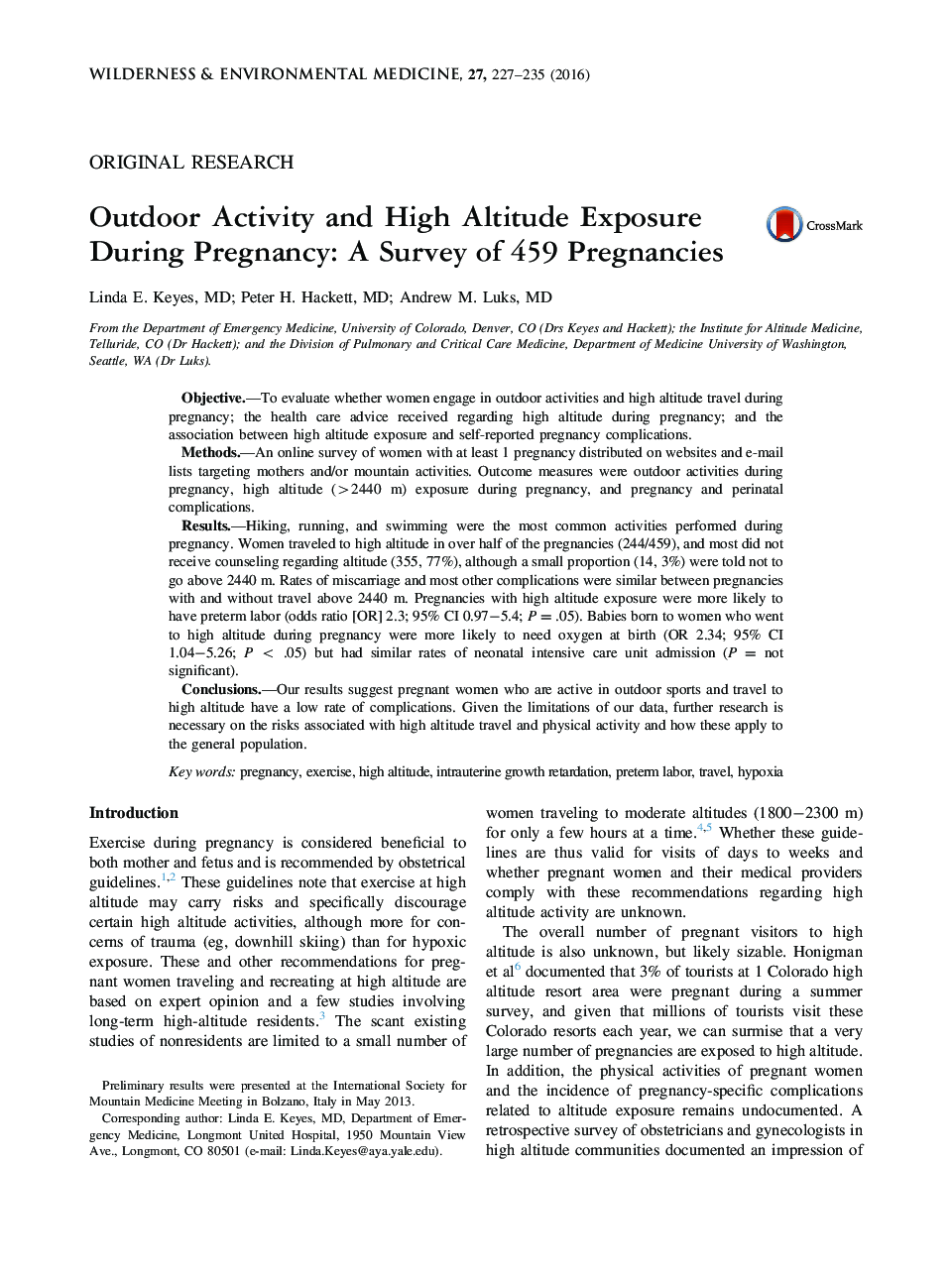| Article ID | Journal | Published Year | Pages | File Type |
|---|---|---|---|---|
| 2615329 | Wilderness & Environmental Medicine | 2016 | 9 Pages |
ObjectiveTo evaluate whether women engage in outdoor activities and high altitude travel during pregnancy; the health care advice received regarding high altitude during pregnancy; and the association between high altitude exposure and self-reported pregnancy complications.MethodsAn online survey of women with at least 1 pregnancy distributed on websites and e-mail lists targeting mothers and/or mountain activities. Outcome measures were outdoor activities during pregnancy, high altitude (>2440 m) exposure during pregnancy, and pregnancy and perinatal complications.ResultsHiking, running, and swimming were the most common activities performed during pregnancy. Women traveled to high altitude in over half of the pregnancies (244/459), and most did not receive counseling regarding altitude (355, 77%), although a small proportion (14, 3%) were told not to go above 2440 m. Rates of miscarriage and most other complications were similar between pregnancies with and without travel above 2440 m. Pregnancies with high altitude exposure were more likely to have preterm labor (odds ratio [OR] 2.3; 95% CI 0.97−5.4; P = .05). Babies born to women who went to high altitude during pregnancy were more likely to need oxygen at birth (OR 2.34; 95% CI 1.04−5.26; P < .05) but had similar rates of neonatal intensive care unit admission (P = not significant).ConclusionsOur results suggest pregnant women who are active in outdoor sports and travel to high altitude have a low rate of complications. Given the limitations of our data, further research is necessary on the risks associated with high altitude travel and physical activity and how these apply to the general population.
